Follow Us x
Inflammation is the enemy. You must gain control, then maintain control. There is no curing gum disease. A team effort, by doctor and patient, is essential to improved health and saving teeth"
Bone Grafting in Lafayette, LA
Bone loss in the jawbone is common due to the destruction from periodontal disease or when one or more teeth have been lost due to injury, decay, or trauma. Without the tooth in place to stimulate the jawbone, the bone around the missing tooth will begin to deteriorate. Over time, the jawbone may deteriorate to such an extent that there may not be enough bone to place dental implants. In cases such as these, your dentist may recommend having a bone grafting procedure to attempt saving a tooth (or teeth) or to rebuild the bone in preparation for a dental implant.
There are four main types of bone graft procedures; autogenous (from the same person), allograft (from another person), xenograft (non-human animal source)., and synthetic (man-made products that resemble the natural product)
Autogenous grafts take bone from one area of the patient's body and transplant it to the location in the mouth being restored. The bone is usually taken from non-essential bones such as the chin areas. The benefit of an autogenous bone graft is that the bone used comes solely from the patient thus reducing the likelihood of rejection and infection. The bone is also still "alive", meaning it still has active cellular material.
Allografts also use human bone transplanted to the area in the mouth being restored. However, allografts do not use the patient's own bone. Instead, the bone usually comes from cadavers who have donated their bone to bone-banks. Bone material of this type can be easily obtained and reduces any additional discomfort that may be cause from harvesting autogenous graft material. Therefore, this is a very common material for bone grafting procedures. All allograft bone material is carefully screened and processed using controlled standards and is considered very safe.
Xenografts also can be used to replace bone in the area requiring treatment, however the bone comes from a non-human source. Usually the non-human source is bovine (cow) but may also be from other animal sources such as porcine (pig). Allografts and Xenografts are used because they do not require a second surgical site to harvest bone and ample amounts of material can be easily obtained.
Synthetic graft materials are lab fabricated (man-made) formulations that closely mimic natural bone or the building blocks of bone.
The Procedure
There are multiple types of bone grafting procedures. Your doctor will help determine which type of bone grafting procedure you will need. In all bone grafting procedures, you will first be numbed or sedated so that you are comfortable during the procedure.
Guided Bone Regeneration
This procedure is typically performed in conjunction with bone grafting. It can be used around teeth when attempting to save them from periodontal disease or to rebuild lost bone structure in preparation for dental implants. During guided bone regeneration (GBR) procedures, the gum is lifted in the affected area, exposing the deficient bone in the jaw. Regenerative membranes are then placed between the gums and the bone. This membrane is designed to encourage natural bone tissue to grow and heal by blocking fast-growing gum tissue from filling in the area where the bone is lost. Once the membrane is placed, the area is sutured closed. Some membranes naturally are absorbed by the body while others must be removed after healing has completed.
Block Grafting
Once you are comfortable in the area where the bone will be removed as well as the location where the bone will be augmented, an incision is made in the gums around the area where bone is needed. This is done so that the dentist can see exactly how much bone will be needed before harvesting it from the patient (if an autogenous graft is being performed).
The bone removed will then be anchored in place in the jawbone with small screws.
Sinus Grafting
This is required when a tooth has been missing too long and the sinus has moved into the space where the tooth used to be, thus preventing the placement of a dental implant. Once you are comfortable an incision is made in the area. A small window of access to the sinuses is created that allows the sinus to be gently lifted forming a cavern or pouch. A grafting material is then placed beneath the newly raised sinus cavity along the existing bone. This grafting material will then mesh with your bone, recreating the lost bone and, once healed, will allow for placement of dental implants.
After the procedure you will likely be given antibiotics as well as pain medication. You'll be asked to follow a restricted diet of soft foods. Bone grafts usually take three to six months, and sometimes as much as nine months, to heal completely. Dental implants will not be placed until your mouth has healed completely.
Dr. James M. Finley, located in Lafayette, LA, is a Periodontist who serves patients from Lafayette, Crowley, Breaux Bridge, Opelousas, St. Martinville, New Iberia, Abbeville, Maurice, and surrounding areas. We are looking forward to welcoming you to our office and encourage you to schedule your appointment today!
Other types of grafting that may be necessary for dental implants:
Have Additional Questions? Call Now: (337) 233-0440
Ready to Schedule Your Appointment? Click Here!

